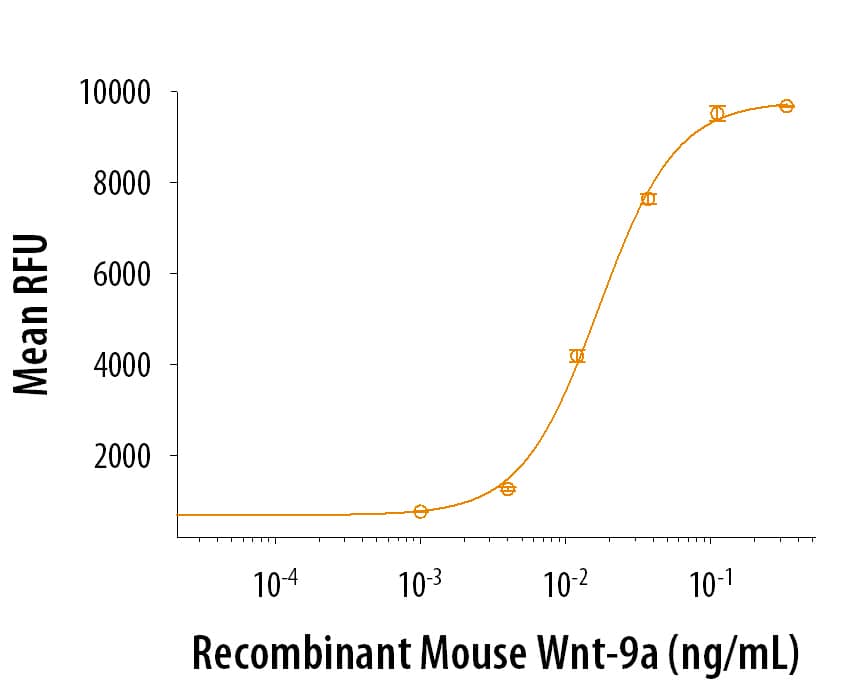Wnt-9a: Proteins and Enzymes
Wnt-9a (Wingless related integration site family member 9a, formerly Wnt-14) is a member of the Wnt family, which are ligands for Frizzled family receptors. Wnt-9a is a secreted glycoprotein expressed in skeletal muscle and heart as well as in B-CLL and gastric, pancreatic, and breast cancer cells. Secretion of Wnt-9a is believed to play a role in avian atrioventricular cardiac cushion development. Human Wnt-9a is 98% amino acid (aa) identical with both mouse and rat Wnt-9a.
The Wnts make up a large family of secreted proteins with roles in pattern formation, cell fate decision, axon guidance, and tumor formation. Wnt family members vary in length between 350 and 400 aa, possess 22 to 24 conserved cysteines, are highly hydrophobic, and show 20 - 85% aa identity within the Wnt family. In general, there are three signaling pathways associated with Wnt-receptor interaction. The first is commonly called the canonical pathway and ultimately culminates in beta-Catenin accumulation and TCF/LEF-1-mediated gene transcription. The other two less well-defined non-canonical pathways include the Wnt/Ca2+ pathway and the planar cell polarity (PCP) pathway.
1 result for "Wnt-9a Proteins and Enzymes" in Products
1 result for "Wnt-9a Proteins and Enzymes" in Products
Wnt-9a: Proteins and Enzymes
Wnt-9a (Wingless related integration site family member 9a, formerly Wnt-14) is a member of the Wnt family, which are ligands for Frizzled family receptors. Wnt-9a is a secreted glycoprotein expressed in skeletal muscle and heart as well as in B-CLL and gastric, pancreatic, and breast cancer cells. Secretion of Wnt-9a is believed to play a role in avian atrioventricular cardiac cushion development. Human Wnt-9a is 98% amino acid (aa) identical with both mouse and rat Wnt-9a.
The Wnts make up a large family of secreted proteins with roles in pattern formation, cell fate decision, axon guidance, and tumor formation. Wnt family members vary in length between 350 and 400 aa, possess 22 to 24 conserved cysteines, are highly hydrophobic, and show 20 - 85% aa identity within the Wnt family. In general, there are three signaling pathways associated with Wnt-receptor interaction. The first is commonly called the canonical pathway and ultimately culminates in beta-Catenin accumulation and TCF/LEF-1-mediated gene transcription. The other two less well-defined non-canonical pathways include the Wnt/Ca2+ pathway and the planar cell polarity (PCP) pathway.
| Source: | CHO |
| Accession #: | Q8R5M2 |
| Applications: | BA, BA |

